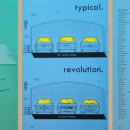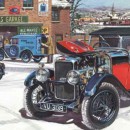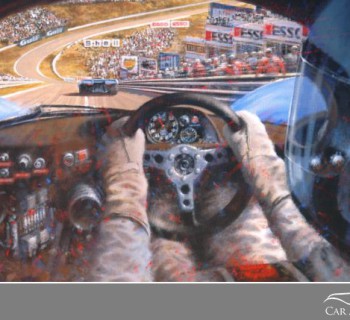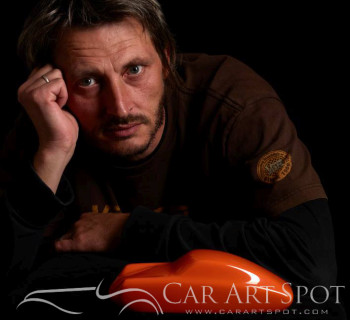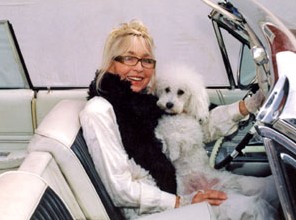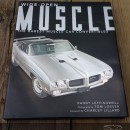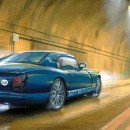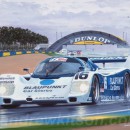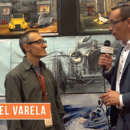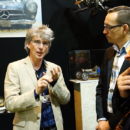Cliff Elgins' humorous and sometimes brutal style of automotive art. What kind of reaction is he trying to get?
You have a very unique, humorous style – sometimes even a little bizarre. The first piece of yours that I came across was an image of a man getting out of a red Sedan that has just run over another man. Can you tell me a little more about it?
Cliff: Well, that piece is certainly a bit more brutal than the rest of my work. What I usually try to capture is not so much the beginning or end of a story but rather a fragment, a moment of time, in the midst of a story. Cars are a wonderful prop for this. The audience must fill in what has happened before and after. I like to include just enough information so the user is able to populate the story themselves. I’m really interested in watching how other people react to and interact with my drawings. Everyone has a different take and often it is something that I wasn’t expecting. It’s a pleasure to hear someone else’s interpretation of what is happening in a piece.
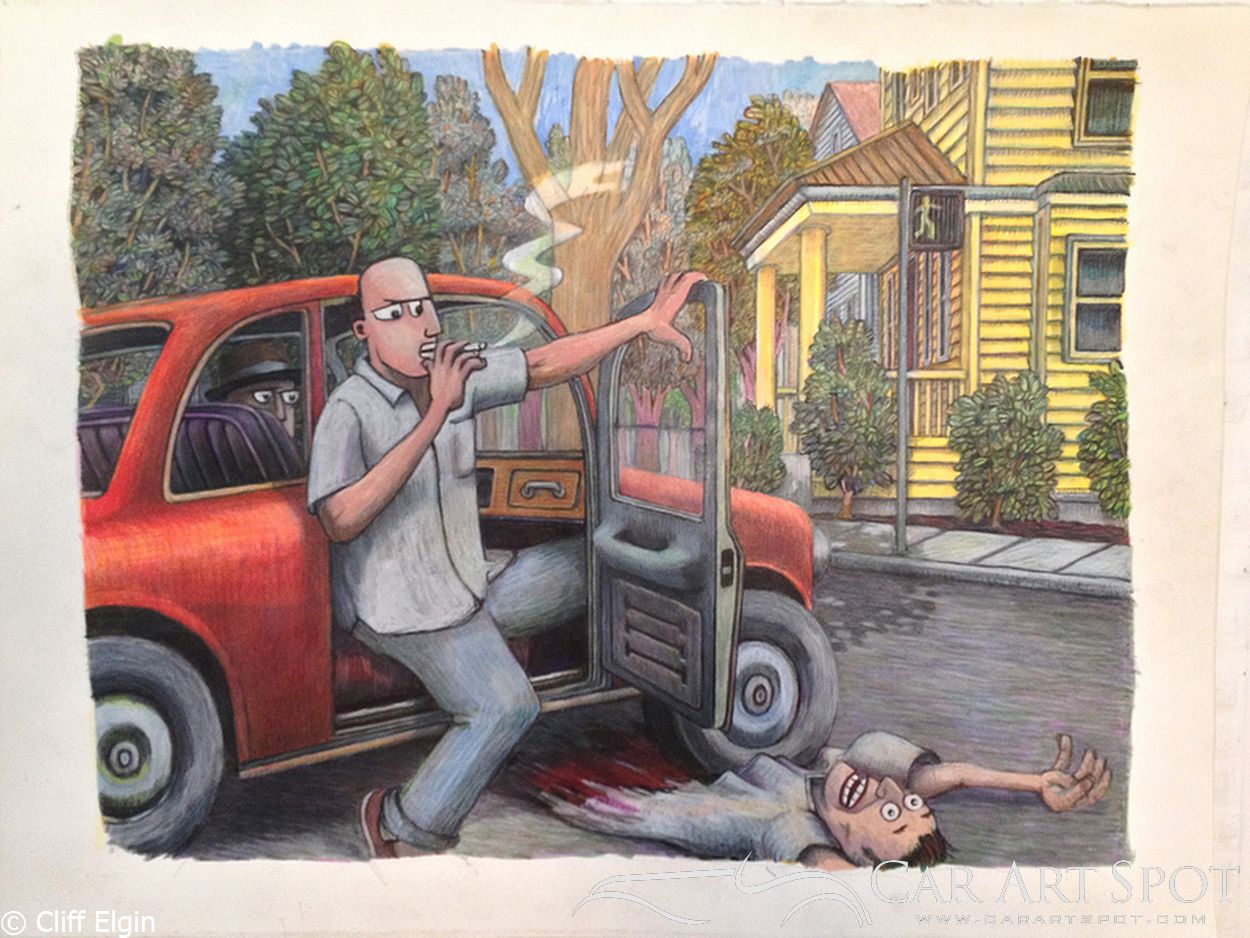
Gangland style by Cliff Elgin
I stumbled across this narrative-style genre when I was a child. I would watch a film channel that was all old films from the 50’s and 60’s. Often I would turn the TV on and find myself in the middle of a film, having missed the beginning. Even more often, I would have to leave before I could see the ending. That’s something that I think about a lot. If you miss the beginning and you miss the ending, you’re compelled to think about what happens. I remember thinking about these films a lot longer than any movie I was able to watch all the way through. That’s something I try to capture in my artwork.
You’re very interested in the reactions of the audience. How do you learn about them?
Mainly through friends and family or other people who are close to me. I am just getting into the gallery scene so now when I see someone looking at a piece in a gallery, I’ll just ask them – “So, what do you think about this piece? What is happening here for you?” Sometimes people will even approach me to start discussing the art or tell me the story behind it. It is often so different than what I myself thought when I created it. I love the different concepts.
When you create your art, do you have a full story in your own mind? Or does it come to life during your process?
I don’t think I have the full story ahead of time. I always keep a sketchbook with me at my day job and I sketch throughout the day. Usually it’s just a thought that’s resting subconsciously in the back of my mind and I’ll do a twenty-second doodle on it. I may come back to it a month later, after I’ve completely forgotten what I’ve drawn. If I’m really intrigued by what’s going on in the image then, I try to figure out what’s going on inside and I’ll make a piece of art from it.
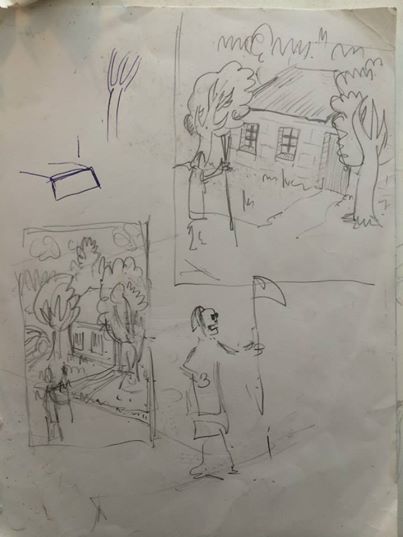
Sketch by Cliff Elgin
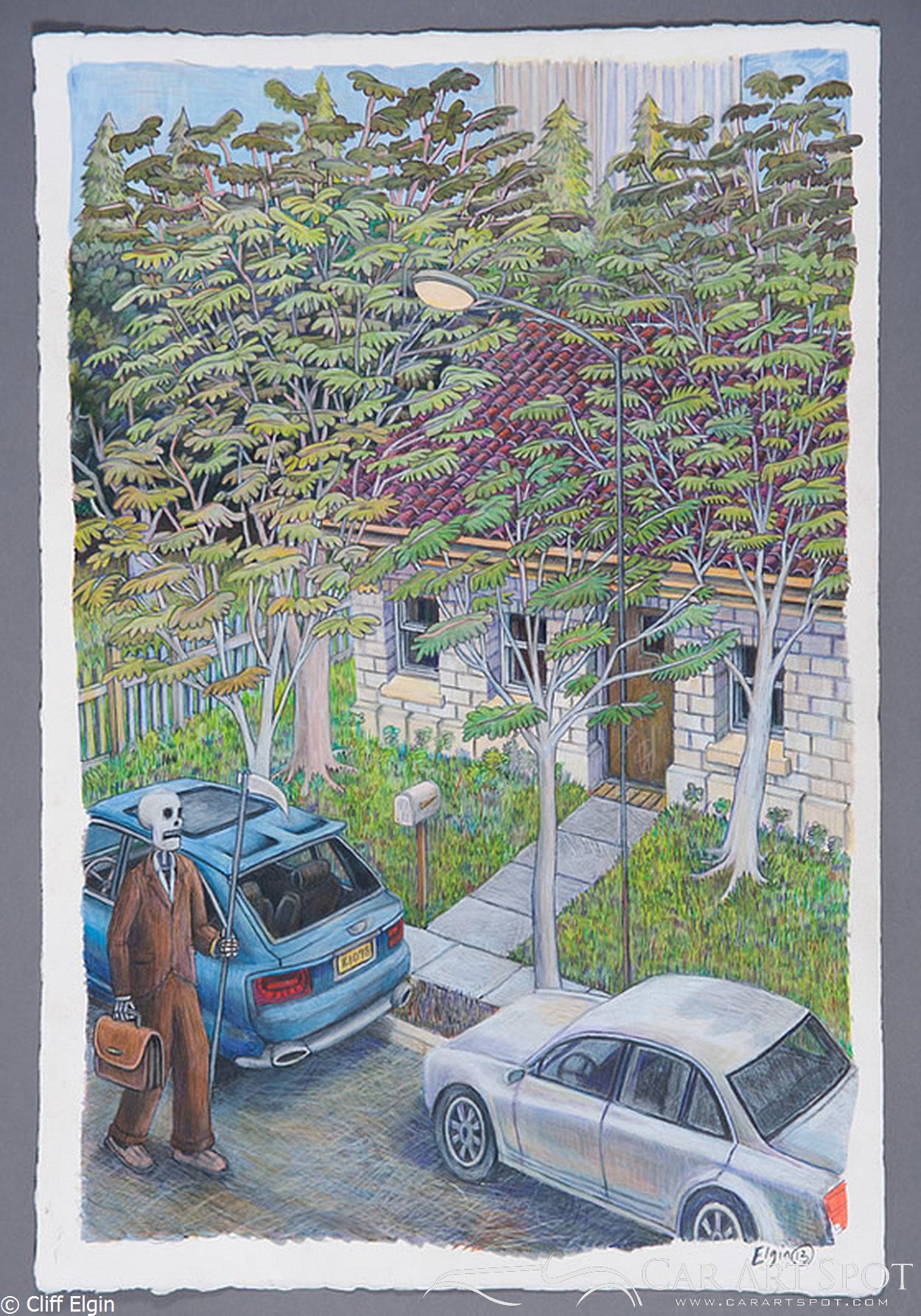
Automotive Art by Cliff Elgin
I love drawing cars. I have a bit of an inner debate over whether I should draw cars from photos or just make them up on my own. I think they’re more interesting when I create them myself. They’re much more imaginative. Occasionally I’ll take a picture of a car and draw it but it feels much more static. There’s no exploration that way. A good drawing or painting must have constant exploration. If the artist isn’t engaged and thinking about the work as it comes to life, it loses its soul.
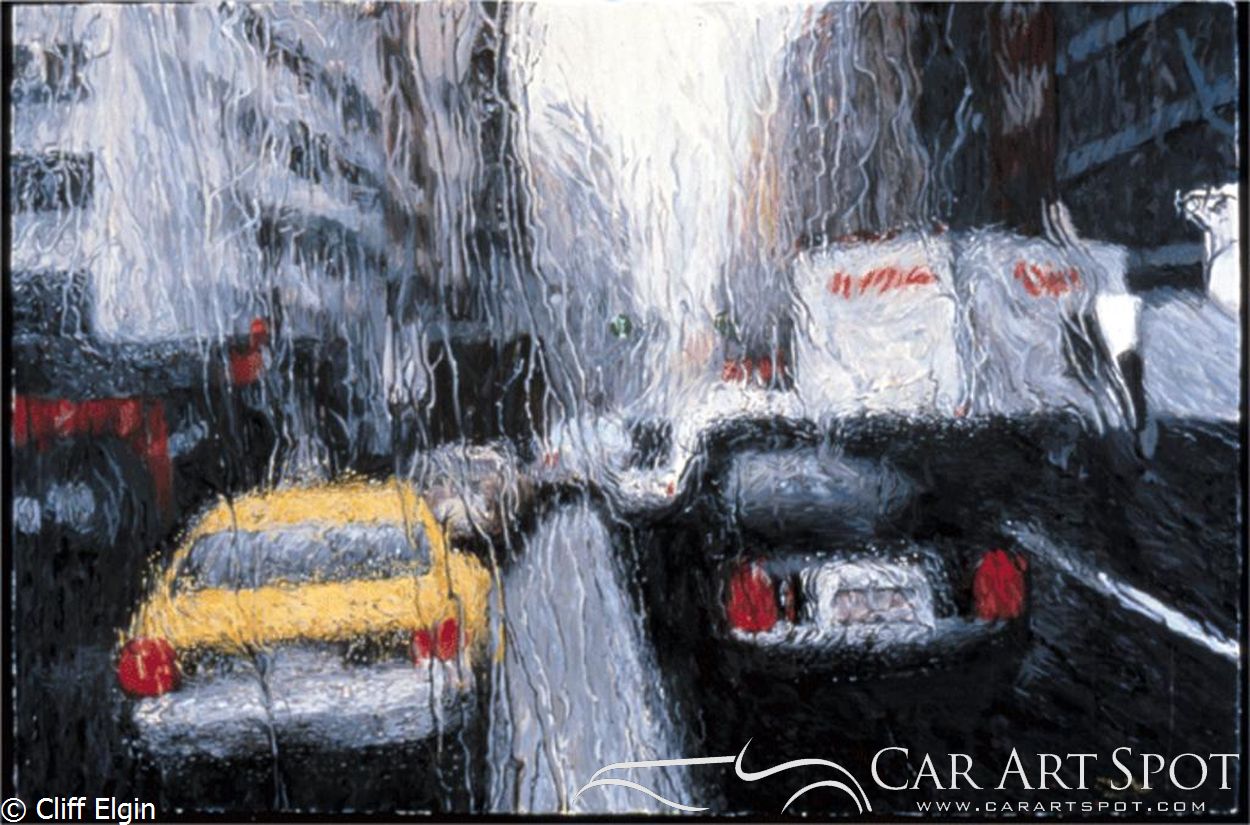
Cars in the rain by Cliff Elgin
I have a lot of different styles. For instance, photo-realist paintings are also something I find interesting. I’m trying to figure out my own way and my own style. These stylistic drawings have evolved from that. I really am much more interested in telling a story. I like the idea of carrying a narrative in my work. I love to read; I’ve read thousands of books! And I want to capture some of that in my artwork.
What types of media do you like to use in your work? What are your favourite items to work with?
Lately I’ve been interested in using beeswax. For instance, melting pigments into the wax and then spreading that onto a wooden board. I like to use coloured pencil and collage. Mostly I just like to work with a page until it has texture and feels like it has been used. Multimedia is a great way for me to accomplish that.
I’ve been drawing ever since I was a little kid. I got into a great art school for college and was fortunate to have some great teachers. I feel like art is a never-ending learning experience for me. I’m doing stuff that is a lot different that I had expected to be doing as a kid. I am not fully mature as an artist nor am I done exploring. I’m moving toward something but I’m not sure what that is yet. I feel like I’m trying to take the next step forward, which would be still doing narrative work, and creating a story but involving more materials and more forms of media.
Automotives appear in a lot of your work. Do you have a relationship with cars yourself?
I think cars are a part of our everyday lives. Everybody drives. People love their cars, especially in America. Your car can be your identity. As for myself, I’m a little wary of cars. I’ve been in a few accidents and I really think of cars as sort of a foreboding prop. In a lot of my drawings, I’m using cars as something that can add to the menacing, darker side of the narrative. They aren’t friendly cars. They can be used to cause harm. You can’t do that with all objects – you can’t draw an evil mailbox. Cars are tools that can be used for good and also to harm. I’m not often showing a car driving over someone but usually it is there as apiece of the story that can be used in a variety of ways. Cars are often potential weapons in my work. For me, this really adds a great deal to the mood of a drawing.
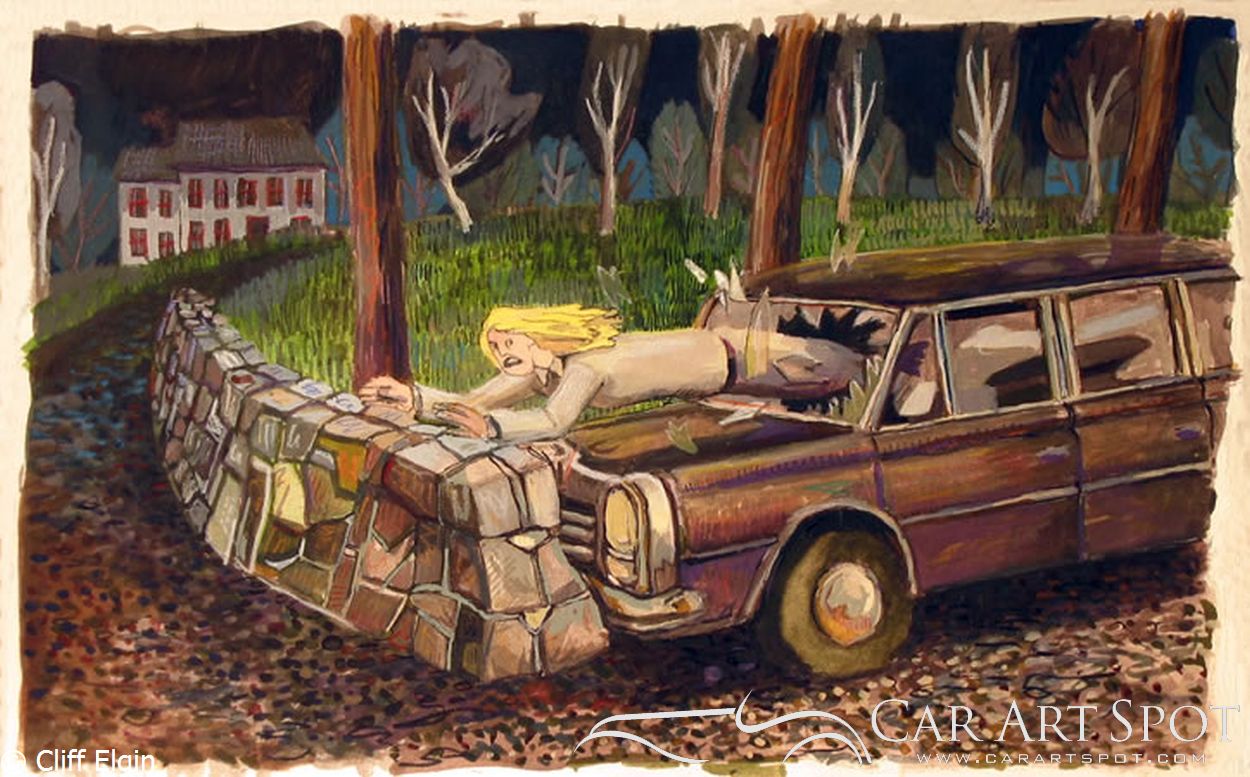
Woman flying out of car window by Cliff Elgin
There was a photographer named Odermatt who worked throughout the 60’s and 70’s taking photos of car wrecks. His work is beautiful, truly remarkable photography. He would take photos of automobile wrecks but it wasn’t gruesome. You could see the story of the accident. Often the cars were a small part of the photograph. Odermatt would capture these images from the top of his VW bus where he would have a unique perspective. They were usually taken in the countryside, on small two-lane roads. He would capture the skid marks of where the car swerved with the wreck itself further down the road. They are stunning photographs, so beautiful, but also representing something terrible happening. The juxtaposition is really intriguing.
I’m not making a living from my art quite yet. That’s a dream of mine. Instead of having a family, I am dedicating my life to art. I go home from work and I paint. I’m quite a homebody so I spend most weeknights and weekends working on my art. Realizing a dream is challenging. I hope it happens someday.
You should definitely visit his website CliffordElgin.com to see more of his work. Did you enjoy this blog? Share it with your friends and like it. That will help me keep doing these interviews.


